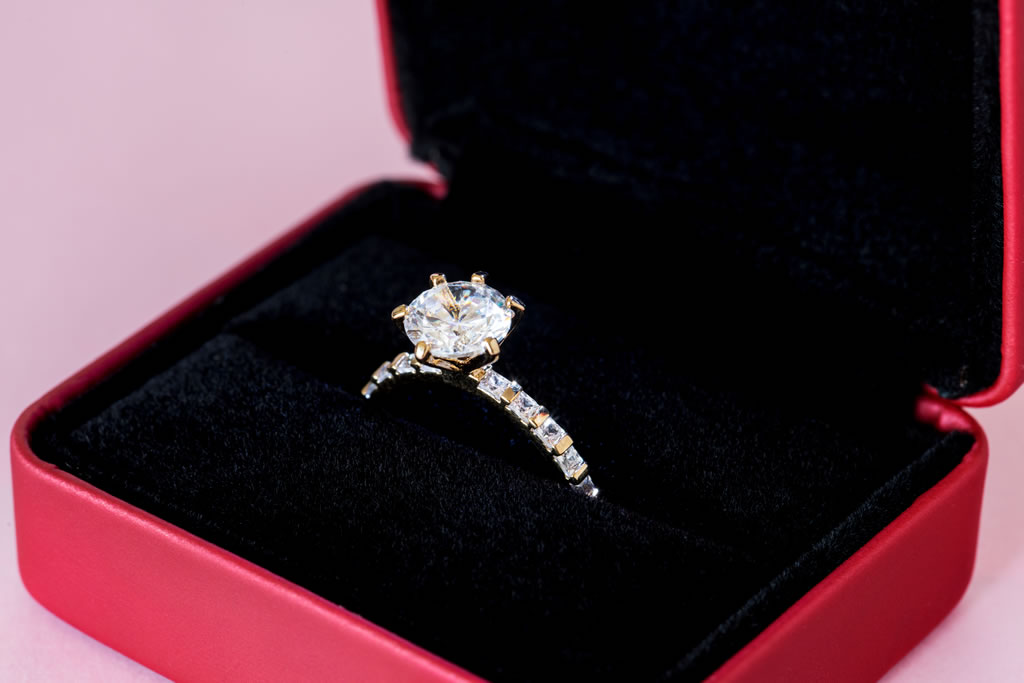Price tags can be confusing when you’re shopping for diamonds. Two stones may look identical, but one costs thousands more. The reason often comes down to how the diamond was made.
Lab-grown diamonds have been gaining traction because they offer the same look and quality as mined diamonds—but at a much lower price. Some people assume they’re fake or somehow “less than,” but that’s not the case.
If you’re wondering why the cost difference is so big, you’re not alone. This guide breaks it down so you can make a clear, confident buying decision.

What Lab-Grown Diamonds Are (and Aren’t)
Lab-grown diamonds are made with technology that mimics how natural diamonds form underground. It takes a mix of high pressure, high temperature, and a carbon seed to grow a real diamond—just in a controlled environment instead of inside the earth.
They’re not fake. They’re not simulants like moissanite or cubic zirconia. Lab-grown diamonds have the same physical, chemical, and optical properties as mined ones.
What they don’t have is millions of years of history or the cost of digging them out of the ground.
The Diamond Certification Laboratory Of Australia (DCLA) and International Gemological Institute (IGI) grade lab-grown diamonds using the same standards as mined diamonds: cut, color, clarity, and carat. So quality isn’t the issue—it’s how they’re made, and how that impacts price.
The Main Reasons They Cost Less
There’s no mystery here. Lab-grown diamonds cost less because they skip the expensive parts of traditional diamond production. Here’s what drives the lower price:
1. No Mining Costs
Mining diamonds is expensive. It involves heavy equipment, labor, fuel, land use, and permits. Lab-grown diamonds cut all of that out. They’re made in labs using machines, not massive excavation sites. That alone saves a lot of money.
2. Faster Production Process
Natural diamonds take billions of years to form. Lab-grown diamonds take a few weeks. This speed means companies can make more diamonds, more often. That helps meet demand without running into the natural limits of mined supply.
3. More Supply, Less Scarcity
Mined diamonds are limited by geography and politics. Lab-grown diamonds aren’t. The supply is easier to scale, which lowers the price. Some people argue this hurts long-term value, but if you’re buying for personal use—not resale—it can be a smart tradeoff.
4. Lower Markups in Retail
Lab-grown diamonds are newer to the market and often sold by direct-to-consumer brands. That means fewer middlemen, less brand inflation, and more price transparency. Traditional diamond pricing tends to involve high markups, especially in luxury settings.
Are Lab-Grown Diamonds “Worse” or Lower Quality?
Nope. Lab-grown diamonds aren’t worse—they’re just different in origin.
They’re graded by the same labs that certify mined diamonds, like GIA and IGI. That means they go through the same checks for clarity, color, cut, and carat. In fact, lab diamonds often have fewer flaws because the conditions can be more controlled.
To the naked eye—and even under a microscope—they look just like mined diamonds. Jewelers usually need specialized tools to tell them apart.
So if quality is your concern, lab-grown diamonds hold their own. What you’re really choosing between is tradition vs. tech, not real vs. fake or high vs. low quality.
What Buyers Should Watch For
Lab-grown diamonds can be a smart buy, but there are a few things to keep in mind before you swipe your card.
1. Resale Value Is Lower
Mined diamonds usually hold value better over time. Lab-grown diamonds, on the other hand, don’t resell for much—at least not yet. The market’s still adjusting, and the high supply plays a big role in that. If you’re buying as an investment, lab-grown probably isn’t it.
2. Make Sure It’s Clearly Labeled
Most jewelers are upfront, but some listings can be vague. Always check that the diamond is labeled as “lab-grown” or “lab-created.” And look for third-party certification—ideally from GIA or IGI—to confirm what you’re buying.
3. Not All Claims Are Equal
You’ll see a lot of marketing about lab-grown diamonds being “eco-friendly” and “ethical.” While it’s true they avoid the issues tied to traditional mining, labs still use a ton of energy. Some use renewable sources, some don’t. If that matters to you, ask how the diamond was produced.
_______________________________________________________________________
Lab-grown diamonds aren’t knockoffs—they’re just made
differently. You get the same sparkle, same quality, and often fewer flaws. The
lower price isn’t because they’re worse. It’s because they skip the costly
parts of mining, middlemen, and slow supply chains.